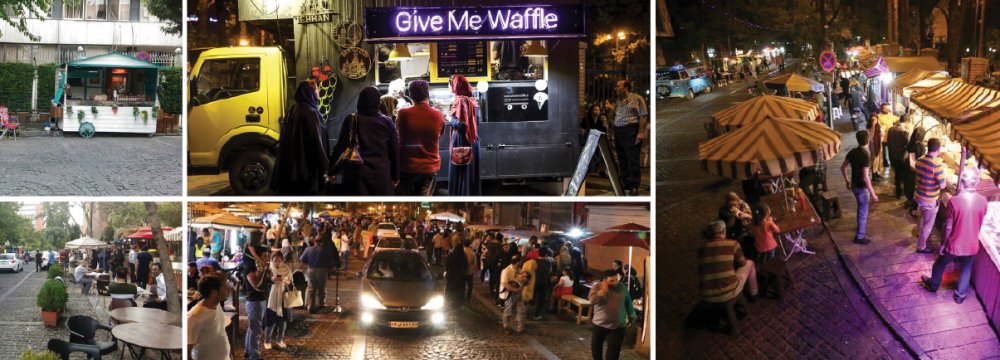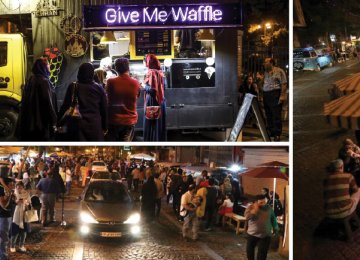Once upon a time Si-e Tir Street in Tehran’s District 12 was frequented by tourists interested in art and culture. Now it has become a popular destination for those wanting to spend a few hours outside and get a tasty treat in a mobile café.
The ancient street, formerly called Qavam-o-Saltaneh, is home to three popular museums, namely Abgineh Museum (museum of glassware and ceramic), the National Museum of Iran and Iran Science and Technology Museum.
It also is a melting pot of religion as it hosts five houses of worship: Hazrat-e Ebrahim Mosque, St. Mary’s Evangelical Church, St. Peter’s Armenian Church, Haim Synagogue and the Zoroastrian Temple of Adorian.
Over the past several months, however, repurposed vans and motorhomes have popped up on the fringes of the cobblestoned street, serving passersby drinks and food and rewriting the image of the historical roadway, ISNA reported.
That’s not necessarily a bad thing. Tourists don’t seem to mind. In fact, by some accounts, they do not merely take interest in the street’s attractions but also visit the street to enjoy the gastronomy.
Supporters say their presence helps draw more people to the street. They opine that it creates a lively atmosphere and an appropriate leisure space, livens up downtown Tehran’s gloomy nights, creates jobs and draws attention to historical urban areas.
Although pushcarts selling ice-cream and boiled beetroot were common in Iranian cities until very recently, the notion of mobile café with chairs and tables on the pavement seems a touch too modern for some folks.
Critics, however, maintain that the trend disturbs drivers, pedestrians and residents in the area. They say that the sidewalk cafes block peoples’ passage and the presence of large crowds raises the risk of traffic collisions and exacerbates congestion.
Some point to disregard for the minimum safety protocols by café owners as many don’t even have fire extinguishers despite using gas tanks to cook.
Others argue that the mobile cafes have made parking more difficult, particularly for tourist buses. It must be mentioned that café or no café, parking across the capital of 12 million people and around 3.5 million cars has long become an impossible enterprise.
Jebreil Nokandeh, curator of the National Museum of Iran, is among the critics and has written three letters to the District 12 Municipality.
Mehdi Chamran, the former chairman of Tehran’s City Council, has also attacked the municipality for allowing the cafes to flourish.
“Tehran Municipality had taken measures to improve the conditions of Si-e Tir Street but the district municipality undid all their hard work,” he once said, without saying anything of value about what the controversial former Tehran Mayor Mohammad Baqer Qalibaf and his men had done for the street.
He claimed that the district municipality had been warned several times but ignored pleas every time.
Support for Cafes
The incoming city council, which will hold its first session on August 23, seems to be in favor of the trend. A group of councilors have come out in support of the move in statements published on social media in the past few weeks.
Tourists and café owners are also happy with the conditions.
The presence of historical and religious sites next to modern cafés is a combination of tradition and modernity and helps associate the present with the past.
Besides, it is a popular spot for everyone, regardless of social class.
The only problem in the eyes of the public is the noise pollution from cars, but that too is a staple in Tehran.
Despite the high rents, café owners are happy with the number of customers they have, both domestic and foreign.
One of the owners says he had worked in many cafés but none has been as pleasant as the present experience.
Given the popularity of these cafes with the youth, similar schemes are expected to pop up elsewhere in Tehran. May be this would be the missing link in the oft-mentioned official policy to develop tourism.






Add new comment
Read our comment policy before posting your viewpoints